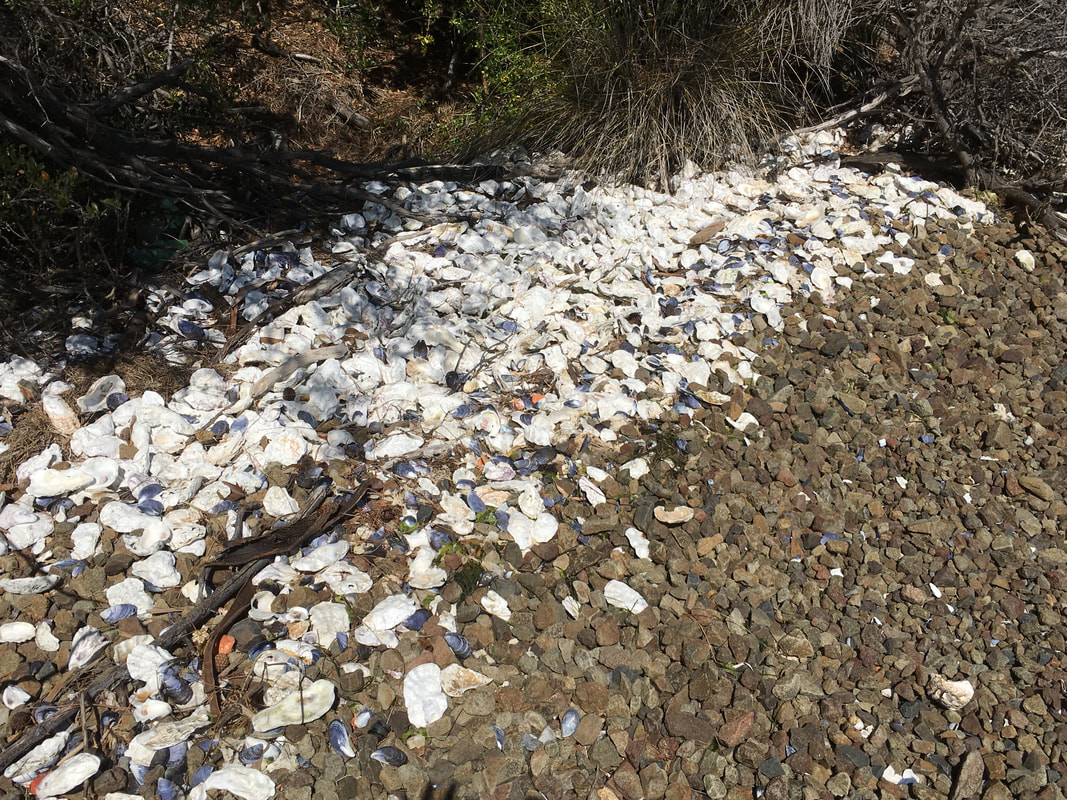-1804: The Domain was the home of a group of aboriginal people called Mouheneenner.
The Domain was protected from extreme weather.
The Domain provided plenty of game, shell fish, local plants and was close to fresh water.
Today there are shell middens near the river.
There were middens dug up at the Royal Tasmanian Botanical Gardens.
The aboriginal people altered the landscape by regularly burning the local flora.
A list of aboriginal heritage sites on the Domain is not widely publicised.
They are best protected by not publicising them.
The majority of middens are by the river.
The middens are evidence that aboriginal people lived on the Domain and ate shell fish. They are easily seen. Look at them and think about the people who created them. There is absolutely nothing to be gained by touching, taking a few shells or playing with the shells.
1804- The British settlers and the aboriginal peoples both lived on the Domain. Conflict ensured.
The Domain was protected from extreme weather.
The Domain provided plenty of game, shell fish, local plants and was close to fresh water.
Today there are shell middens near the river.
There were middens dug up at the Royal Tasmanian Botanical Gardens.
The aboriginal people altered the landscape by regularly burning the local flora.
A list of aboriginal heritage sites on the Domain is not widely publicised.
They are best protected by not publicising them.
The majority of middens are by the river.
The middens are evidence that aboriginal people lived on the Domain and ate shell fish. They are easily seen. Look at them and think about the people who created them. There is absolutely nothing to be gained by touching, taking a few shells or playing with the shells.
1804- The British settlers and the aboriginal peoples both lived on the Domain. Conflict ensured.
